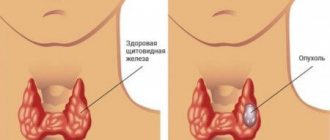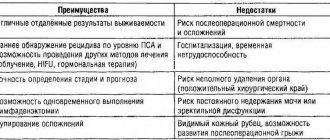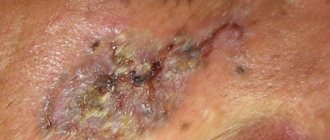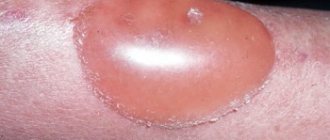Treatment of pancreatic tumors is an important problem, given that the disease develops very quickly, is prone to metastasize to distant organs (peritoneum, skeletal system, lungs, brain) and has a poor prognosis. Features of the disease include a long asymptomatic course, and therefore a late visit to the doctor. Therefore, pathology is often detected in the final stages, when metastases have spread to blood vessels, nerve plexuses, and other organs. During this period, treatment is ineffective and mainly palliative (aimed at reducing the patient’s suffering), and the prognosis is unfavorable. It is no longer possible to cure the pathology at this stage. People over the age of 60 are affected; men predominate among patients (the incidence of cancer is 1.5 times higher), this is explained by bad habits that are more common among them than among women.
Great successes in the treatment of pancreatic cancer have been achieved in Israel, Germany, and the USA. The high level of development of medicine and modern medical technologies make it possible to identify this pathology at the earliest stages and successfully treat it without complications.
What is pancreatic cancer?
Pancreatic cancer is a group of severe cancers that develop from duct cells or organ parenchyma. If diagnosed late, it ends in death: it currently ranks 4th in mortality among all malignant processes. If the disease cannot be detected at an early stage, metastases develop in regional lymph nodes, liver, stomach, and sections of the small and large intestines adjacent to the pancreas. Vessels and solar plexus are also affected. Later the process spreads to distant organs.
Due to the absence of specific symptoms or their inexpressiveness at the onset of the disease and the aggressive course of the disease in the future, this pathology cannot be treated. You can only extend life for a certain period of time. Therefore, the name “silent killer” fully characterizes pancreatic cancer.
Causes of tumor development in the pancreas
The causes of the disease have not been precisely established to this day. It is believed that the main etiological factor is a mutation of a certain gene (KRAS 2), which is determined by performing a puncture biopsy using the PCR method. The cells of the pancreatic ducts are most susceptible to mutations, so 95% of tumors are adenocarcinoma.
There are many risk factors that, under unfavorable conditions, become a trigger for the formation of cancer.
History of chronic diseases and surgeries:
- chronic pancreatitis and other pathologies of the digestive tract;
- diabetes;
- operations on the stomach.
Lifestyle:
- smoking (30% of cases);
- drinking alcohol (20%);
- hazardous working conditions (woodworking, rubber production, contact with asbestos);
- poor diet with insufficient amounts of fresh vegetables and fruits;
- physical inactivity, obesity.
The influence of pancreatic cancer in close relatives and occurring before the age of 60, in the presence of two or more such cases, the risk increases exponentially.
Due to the fact that men aged 60 years and older are more likely to get sick, indirect risk factors are identified:
- floor;
- age;
- race (there are statistical data on the predominance of the development of pancreatic cancer in representatives of the Negroid race).
But in a large number of cases of pancreatic tumor, the causes of its formation cannot be established.
Precancerous diseases play an important role and must be treated from the moment they are detected:
- adenoma;
- cyst;
- chronic pancreatitis.
Causes
Despite the rapid development of modern medicine, doctors cannot yet determine the exact cause of pancreatic cancer.
Why does pancreatic cancer develop?
But there are factors that contribute to the development of cancer:
- overweight;
- atypical multiple melanoma, Lynch syndrome and genetic characteristics of the body;
Lynch syndrome - hereditary factor (if one of your blood relatives has previously suffered from pancreatic cancer, then the chances of developing this pathology increase);
- stomach or duodenal ulcer;
- inflammation of the pancreas (pancreatitis);
- diabetes;
- bad habits, in particular smoking.
Smoking is one of the provoking factors
On a note! According to statistics, more than 90% of patients with pancreatic cancer had the bacterium Helicobacter Pilori found in the stomach cavity. Many medical centers are establishing a connection between this bacterium and the disease.
Stages and symptoms of pathology
There are 4 stages of cancer, based on the extent of the tumor process:
- I - the formation is small in size and located within the boundaries of the pancreas;
- Stage II is divided into 2 degrees, taking into account the involvement of the ducts and lymph nodes;
- IIA - the lymph nodes are not affected, the tumor formation has spread to the common bile duct or major papilla of the duodenum;
- IIB - lymph nodes are involved in the cancer process;
- III - nearby organs are affected (cancer grows into the stomach, duodenum, colon, spleen, blood vessels, nerve trunks);
- IV - the tumor grows into distant organs (liver, bones, lungs, brain).
Main symptoms of pancreatic cancer:
- pain;
- dyspepsia;
- jaundice, accompanied by itching, acholia, dark urine;
- anorexia;
- weight loss;
- disturbance of carbohydrate metabolism;
- intoxication, accompanied by severe weakness, fatigue, lethargy, sleep disturbance, low-grade fever;
- skin manifestations in the joint area in the form of small nodules.
Each stage has certain clinical manifestations.
The first is asymptomatic or accompanied by nonspecific complaints of weakness, lethargy, increased fatigue, and decreased appetite. Most often, patients do not pay attention to these symptoms and do not associate them with a serious pathology. No one seeks medical help at this stage.
The second stage is characterized by an increase in symptoms, but even in this period the disease is practically not diagnosed.
The third stage is manifested by the further development of the disease:
- the pain symptom intensifies due to the tumor growing into the nerve plexus (solar). It decreases when lying on your side with your knees brought up to your stomach; narcotic analgesics are used to relieve pain;
- splenomegaly develops due to compression of the splenic vein and cancer metastasis to the spleen;
- ascites and edema in the legs appear when the portal vein is compressed;
- weight loss progresses due to impaired digestion of proteins, fats, carbohydrates (even with a sufficient amount of food eaten, body weight decreases);
- nausea, vomiting, stool disorders become more frequent due to tumor damage to the stomach and intestines and the development of obstruction of these organs;
- Pancreatic diarrhea occurs due to the cessation of lipase entering the small intestine and a violation of the breakdown of fats, as well as their absorption in the large intestine.
The fourth stage is the final stage: due to metastasis to distant organs, the clinical picture varies and depends on the predominant lesion of a particular system.
Initial signs of cancer
Pancreas
As a rule, at the very early stage of its appearance with pancreatic cancer, symptoms may be completely absent. This is the main danger of a gland tumor - its late diagnosis, at the stage of metastasis and the formation of secondary foci of cancer.
The first symptoms of a tumor in the pancreas, which every person must pay attention to:
- the appearance of periodic pain impulses in the gland, discomfort in the area of the left hypochondrium, not related to food intake;
- increased discomfort in a person at night - when the main processes of digestion in the gland occur in people;
- the presence in a person, in addition to subcostal discomfort, of aching, stabbing impulses in the navel, lower back, between the shoulder blades;
- slight change in the color of human sclera and integumentary tissues – their yellowness;
- loss of appetite, not supported by adherence to a special diet or exacerbation of chronic diseases of the digestive structures;
- aversion to certain products and dishes that were previously completely consumed by humans;
- increased fatigue - performing work duties and household chores requires much more time and effort.
Classification of pancreatic tumor by location
Based on the localization of the malignant process in the pancreas, cancer is distinguished:
- heads (in 75% of all cases);
- bodies (in 15%);
- tail (10%).
The neoplasm is of unspecified localization, when it is not possible to identify the primary focus due to the prevalence of the process.
Pancreatic head cancer
When the head of the pancreas is damaged, the final part of the Wirsung duct and common bile duct are involved in the process. With the rapid growth of the tumor, the ducts are compressed. There are:
- cholestasis with the development of obstructive jaundice;
- pancreatitis due to impaired outflow of pancreatic secretions.
Jaundice manifests itself:
- bright coloring of the skin, mucous membranes and sclera;
- painful itching, worse at night (a consequence of the entry of bile acids into the blood and skin);
- acholic feces;
- dark urine.
Courvoisier's symptom gradually develops: a painless huge gallbladder is palpated in the area of the right hypochondrium. Bile accumulates in it, which does not enter the duodenal lumen due to obstruction of the common bile duct by a neoplasm.
Due to the cessation of release of pancreatic juice into the duodenum, self-digestion of the gland with its own enzymes begins with the development of pancreatitis. This is manifested by dyspepsia and pain, pancreatic diarrhea (greasy gray stool that is difficult to flush from the walls of the toilet) due to impaired breakdown and absorption of fats, and weight loss.
Cancer of the body or tail organ
The main symptom of pancreatic body cancer is a “dagger” girdling pain. The intensity is associated with metastases in the celiac plexus, so it intensifies in a horizontal position when the tumor presses on the nerve plexus. The pain decreases if the patient is on his side with his knees brought to the chest. Subsequently, the pain becomes constant and does not depend on the position of the body.
Damage to the tail of the pancreas is relatively rare. Symptoms with this localization appear in the final stages - severe pain. When metastasis occurs in the splenic vein, thrombosis occurs and pressure in the portal system increases. As a result, the spleen enlarges and varicose veins of the esophagus occur.
Since the bulk of the islets of Langerhans that produce hormones are localized in the tail, the following may occur:
- diabetes mellitus with all its typical symptoms (dry mouth, thirst, polyuria) and further complications (this is also typical for glucagonoma - a tumor arising from the α-cells of the islets of Langerhans, also accompanied by a rash on the skin of the knee joints, bright red with smoothed papillae tongue);
- hypoglycemia as a result of insulinoma (malignant formation of β-cells), producing a large amount of insulin and manifested by severe weakness up to loss of consciousness and hypoglycemic coma, hand tremors, sweating, tachycardia, and a sharp feeling of hunger;
- stomach ulcers with heartburn, brown vomiting, pain, diarrhea, weight loss that cannot be treated due to the development of gastrinoma (neoplasms from g-cells of the islets of Langerhans).
Palliative operations
During palliative operations, cancer is not removed; their goal is to relieve the patient of symptoms caused by a malignant tumor. With cancer of the head of the pancreas, obstructive jaundice often develops, a condition caused by compression of the bile duct and obstruction of the outflow of bile. The patient's skin, mucous membranes and whites of the eyes turn yellow, itchy skin disturbs, the general condition and prognosis worsen.
This complication can be dealt with in three ways:
- Drainage . During endoscopic retrograde cholangiopancreatography (ERCP) or percutaneous transhepatic cholangiography, a drainage tube is placed in the bile ducts. Through it, bile can flow outward, into the lumen of the duodenum, or in both directions at once. This is quite effective, but not very convenient: the drainage tube is constantly in the way and can accidentally move or fall out.
- Stenting is a more modern solution. Endoscopically, using a catheter inserted into the bile ducts from the duodenum, a stent is installed in the blocked area - a tube with a mesh wall made of polymer or metal. It expands the lumen of the duct and ensures the free flow of bile. Stenting is a quick and relatively safe procedure and is performed without incisions.
- Bypass surgery is an operation during which the surgeon creates a bypass for the outflow of bile. Compared to stenting, surgical intervention carries a higher risk of complications, and not all patients can tolerate it. But sometimes it allows you to more effectively and permanently restore the flow of bile. During the operation, you can cut the nerves that cause excruciating pain.
Diagnosis of pathology
Laboratory data in the diagnosis of pancreatic cancer are nonspecific: general and biochemical blood tests indicate the presence of an inflammatory process. But these studies are prescribed first when cancer is suspected. A general clinical blood test can reveal (in addition to leukocytosis, thrombocytosis and increased ESR, which indicates inflammation) anemia, which should immediately become a reason for further examination.
Biochemical tests show:
- decrease in total protein;
- increased amylase, total bilirubin and individual fractions, transaminases (AST, ALT), alkaline phosphatase.
Laboratory results depend on clinical manifestations.
A blood test is prescribed for cancer markers - Ca 19.9 and Ca 125, but their sensitivity in the initial stages of the disease is low.
Functional studies include:
- Ultrasound and endosonography;
- CT, MRI - allow you to detect with high accuracy not only cancer, but also metastases;
- ERCP - endoscopic retrograde cholangiopancreatography, which allows to detect changes in the ducts (choledochus and Wirsung), as well as in the liver and gall bladder;
- laparoscopy;
- biopsy with further microscopic examination - in 60% of cases it allows to differentiate a benign process from an oncological one.
Surgical methods
Surgical examination methods are those diagnostic methods in which the integrity of the skin is disrupted. Such methods of detecting cancer are highly accurate, and it is on the basis of some of them that one can assert the malignancy of the process and the spread of metastases in the body.
Diagnostic laparoscopy is used to examine the abdominal cavity to identify metastases in it.
The instrument is inserted through a small incision on the abdominal wall, all data is displayed on a computer monitor and the doctor can assess the condition of the internal organs under high magnification. If necessary, during laparoscopy, a biopsy specimen and ascitic fluid are taken for histological examination.
Angiography is a complex x-ray method that involves injecting a contrast agent into the femoral artery. With the blood flow, the contrast moves to the pancreas and shows a number of changes.
During the malignant process, deformations of the arteries, displacement and asymmetric narrowing of the vessels of the organ are mainly detected. If high-quality equipment is used, tumors with a diameter of less than one cm are detected.
Angiography is usually prescribed as an addition to other examination methods, in particular CT.
A biopsy, that is, taking a small piece of tissue from atypically changed tissues or a developing tumor, allows you to refute or, on the contrary, accurately establish the malignancy of the process.
The material is taken by puncture of the organ using a special aspiration needle. The entire process is controlled using radiography or ultrasound scanning, this eliminates damage to nearby structures.
If the tumor is in hard-to-reach places, laparoscopic manipulation may be required to perform a biopsy.
The following video will tell you how pancreatic cancer manifests itself:
Late diagnosis is one of the main reasons for poor prognosis in pancreatic cancer (PCa). In 80-90% of patients, the diagnosis is made at a stage when the tumor is no longer resectable: surgery, the only radical method of treating prostate cancer, is no longer feasible due to local spread of the tumor or is pointless due to the presence of distant metastases.
The delay in establishing a diagnosis is due to a number of difficulties of an objective and subjective nature:
- absence of specific (peculiar to this particular disease) symptoms: early external manifestations of prostate cancer are characteristic of many other diseases of the digestive system in general and the pancreas in particular;
- difficulties in identifying tumors smaller than 2 cm using instrumental and laboratory diagnostic methods;
- difficulties in the differential diagnosis of prostate cancer using instrumental methods with space-occupying formations of a different nature: benign neoplasms, cancer metastases of other organs, changes that have arisen in the pancreatic tissue as a result of pancreatic necrosis;
- insufficient oncological alertness and awareness of modern methods and algorithms for diagnosing prostate cancer among doctors of multidisciplinary medical institutions - therapists, gastroenterologists, surgeons.
Meanwhile, today there are methods and algorithms that facilitate the early diagnosis of pancreatic cancer.
To diagnose prostate cancer, the following methods are used (usually in combination):
- standard (transabdominal) ultrasound examination (ultrasound);
- multiphase spiral computed tomography (MSCT) with contrast enhancement;
- magnetic resonance imaging (MRI);
- endoscopic retrograde cholangiopancreatography (ERCP).
- magnetic resonance cholangiopancreatography (MRCP);
- endosonography (endoultrasound);
- fine needle aspiration biopsy (FNA);
- study of the level of tumor marker CA19-9;
- positron emission tomography (PET);
- laparoscopy.
Some of the listed methods are mandatory stages in the diagnosis of prostate cancer, others are used depending on the detected (or not detected) findings.
How is pancreatic cancer treated?
Treatment of pancreatic cancer depends on the stage of the detected disease. Only at the beginning of its development can an oncological disease be curable. But pathology is diagnosed at the final stages, when in many cases surgical intervention as the main method is impossible or is palliative in nature, and the assistance provided can only alleviate suffering.
Goal of treatment:
- reducing the size of the formation;
- prevention of further spread (adjuvant therapy).
For this, different methods are used in combination:
- surgical;
- chemotherapy (special treatment regimens are drawn up);
- radiation and radiotherapy;
- targeted therapy;
- treatment with painkillers.
Medicines
Drug therapy is relevant at all stages and is used as a symptomatic method. There is a certain standard of treatment.
Palliative therapy is aimed at relieving the main symptoms of the disease. To reduce pain in the early stages associated with increased secretion of hydrochloric acid in the gastric juice, PPIs (proton pump inhibitors) are prescribed - medications from the groups pantaprazole, rabeprazole, omeprazole.
Insufficiency of exocrine pancreatic function is corrected by taking enzymes (Pancreatin, Creon, Mezim-Forte).
If it is impossible to restore bile circulation with severe unbearable itching of the skin, cholestyramine and phenobarbital are prescribed.
For analgesia, drugs of several groups are used:
- NSAIDs;
- non-narcotic analgesics;
- narcotic.
In the initial stages, it is enough to take tablets, later they are used parenterally, in the form of injections. Specific medications, frequency and duration of their use are prescribed by a doctor. This treatment can help for a certain time until metastasis occurs. But the temporary improvement that comes as a result of taking medications should not be encouraging. Pancreatic cancer requires radical treatment, which gives a chance for recovery.
Surgical methods
The main treatment for pancreatic cancer is tumor removal. When combined with chemotherapy and radiation therapy, life expectancy increases.
Surgical treatment is divided into:
- radical;
- palliative.
The radical method is the removal of the root cause of the tumor with the affected part of the pancreas and adjacent organs, regional lymph nodes and tissue. If cancer is found in the body or tail, the spleen is also resected. The survival rate after such an operation is 25% over five years.
Palliative surgery is aimed at alleviating the condition of a patient with an existing inoperable tumor:
- partial removal of the formation to reduce tumor compression of surrounding tissues and organs;
- removal of metastases;
- elimination of obstruction of the duodenum or biliary tract.
Also carried out according to indications:
- gastric bypass if the tumor prevents food from entering the duodenum;
- installation of an endoscopic stent in the common bile duct for its patency.
Operations are performed with a scalpel and using the latest technological advances:
- Cyberknife - the tumor is simultaneously excised and adjacent tissue is irradiated (malignant cells that remain after cancer resection die from irradiation). The treatment is carried out by a robot that works without the risk of radiation. No anesthesia is required as the operation is painless. Pancreatic cancer is successfully treated using CyberKnife (stereotactic surgery) at the Nuclear Medicine Center in Ufa (cost: 305,000 rubles).
- NOTES technique - pancreatic tumors are removed using access through natural openings. The operation is performed without a single incision. Due to the high cost of equipment, it is not available in all clinical hospitals. Such high-tech equipment is available in Novosibirsk, where treatment of any disease of the digestive system is carried out.
Chemotherapy
If the cancer is inoperable, chemotherapy is used as an independent method. Cytostatics suppress the growth and division of tumor cells. They are also prescribed after surgery to destroy remaining cancer cells and prevent relapse - this is adjuvant therapy. It is performed if there is a suspicion of remaining malignant particles that can cause relapse and death. In most cases, despite the therapy, the disease recurs.
Cytostatic drugs are used in the form of:
- monochemotherapy;
- polychemotherapy (2 or more drugs are used simultaneously or alternately).
The use of drugs causes severe side effects associated with the impact not only on tumor cells, but also on unmodified tissues.
Gemcitabine (Gemzar) is used in chemotherapy for pancreatic cancer. It reduces the tumor volume by 10% and improves the patient’s well-being. It is used both for monotherapy and with Fluorouracil (GF combination): the effect occurs in 60% of cases, life is extended to 1 year or more, tumor growth slows down by 20%.
Due to poorly tolerated side effects, each patient:
- a special lactic acid diet (kefir, yogurt) is selected;
- It is recommended to give up alcoholic beverages and heavy foods (buckwheat, rice, dates, other fruits and vegetables, and drinking plenty of fluids are necessary);
- antiemetic treatment is prescribed;
- A consultation with a psychologist is prescribed to increase motivation for treatment and recovery.
Radiation therapy
This method destroys the protein of cancer cells, causing the tumor to shrink. Exposure to X-ray radiation leads to the death of atypical cells and causes stabilization of the tumor.
Radiation treatment is carried out:
- before surgery - to reduce the size of the tumor;
- during and after surgical treatment - to prevent relapse;
- as an independent method for established inoperable tumors - to slow down the growth of the tumor and alleviate the patient’s condition.
Survival after such treatment is about a year. There is a high risk of radiation reactions, especially in the elderly.
Abroad, new drugs are constantly being developed to help cope with cancer. Scientists from the USA have developed a vaccine that consists of radioactive particles and the bacteria Listeria monocytogenes. Radiation only affects tumor cells. When the vaccine is administered, the bacterium (the carrier of radioisotopes) attacks atypical cells and metastases, destroying them. The cost of such a vaccine is very high, but comparable to its effectiveness.
In Moscow, stereotactic radiation therapy using the high-tech CyberKnife device is used with successful results. This method is effective against pancreatic cancer with metastases.
Targeted treatment
The use of new generation drugs makes it possible to treat the disease not at the symptomatic, but at the genetic level.
Molecular-targeted (molecular-targeted, biological) therapy (from English target - goal, target) is the newest direction in cancer therapy. Based on blocking the growth of atypical cells. It has a targeted effect on specific target molecules that are directly involved in the process of tumor formation. Traditional chemotherapy blocks all cancer cells from dividing. Targeting acts only on a specific genetically altered, mutated protein or enzyme that is specific only to atypical cells and is not found in normal tissues. It interrupts the chain of continuous division, stopping the process of plus tissue growth itself. Smart drugs have several other mechanisms of action, blocking the formation of blood vessels that feed the tumor and disrupting its oxygen supply.
Targeted therapy is effective and relevant, harmless to normal tissues. The price of drugs remains very high, since they are created using genetic molecular engineering. But they give hope for recovery to patients who are considered incurable. Each patient needs to undergo a number of complex studies to select a specific drug. The patient tolerates the therapy well, there are no side effects. The drug is available in tablet form, so you can undergo home treatment without being in a medical facility.
To date, there is only one drug for the treatment of pancreatic cancer - erlotinib (Tarceva). It significantly prolongs life, although it does not guarantee absolute relief from the disease. The feedback from recognized oncologists around the world and patients who have undergone treatment is most positive. Several dozen more targeted drugs are at the stage of clinical trials.
This method of treatment is used in several oncology clinics in Moscow. One of them is the Yusupov Hospital. It successfully uses several licensed targeted drugs. Cancer of the pancreas, stomach, lungs, as well as neuroendocrine formations are successfully treated.
Unconventional methods of treatment
Any traditional method of treating pancreatic cancer is dangerous due to the worsening of the disease and the development of relapse. Due to the poor prognosis, it is necessary to consult a doctor as soon as possible, without self-medicating and without wasting time.
Some folk remedies provide temporary relief, but cannot cure cancer completely.
On the Internet you can often find an annotation for the drug ASD-2 (antiseptic Dorogov stimulant of the second fraction). It is claimed that it effectively eliminates pain and inhibits the further growth of malignant neoplasms. When creating the product, the author used it to treat severe cancer. He warns that it must be used under the supervision of a specialist. Self-medication is strictly prohibited, as there are cases of deterioration of the condition. Due to the lack of evidence-based medicine, it is impossible to talk about its effectiveness or cure of cancer.
A method of treating cancer with soda has been advertised. Author - Professor I.P. Neumyvakin. According to the instructions, it is recommended to drink sodium bicarbonate with water every day on an empty stomach according to a certain scheme. According to the testimony of patients who have completed this course, with the right approach, the body is completely cleansed of atypical tumor cells, and in this way stage 4 pancreatic cancer is cured. But there are no studies of evidence-based medicine and statistics on drug trials that would confirm the effectiveness of the technique.
Who is susceptible to the disease
The pancreatic cancer screening plan includes the following tools:
- CT scan. Gives clear images of the gland. It helps to resolve the issue of the possibility of performing surgery, as it reliably determines the location of the tumor in relation to neighboring tissues and organs, and its proximity to the blood vessels. The method makes it possible to see the unevenness and vagueness of the contours of the organ, the volume of the gland, its heterogeneity, and the distance of metastases. Also, computed tomography in 90% of cases determines an indirect sign of malignancy of the pancreas - dilation of the bile ducts of the liver with obstructive jaundice.
- Ultrasound examination (ultrasound). Reveals an increase in organ volume, dilation of ducts, blurred contours.
- Laparoscopy. Confirms the formation of obstructive jaundice: a stretched, tense gallbladder, a greenish-yellow lower part of the liver, the concentration of free fluid in the peritoneum.
- Fibrogastroduodenoscopy (FGDS). Determines symptoms of tumor pressing on the initial part of the small intestine and stomach. If malignant cells have grown into these organs, it is possible to see them and take biomaterial for a biopsy.
- X-ray (graphy). Shows deformation of the duodenum and stomach due to compression or germination of a malignant tumor.
Other instruments and laboratory tests are also used.
Particular attention should be paid to such signs if you have a family history of pancreatic cancer or if you are in a high-risk group (smoke, are obese, abuse alcohol, etc.). An examination carried out by qualified doctors will determine the causes of the symptoms and begin treatment immediately.
Diet therapy and physical therapy
Special dietary nutrition is part of the patient’s comprehensive treatment and rehabilitation. The duration of the diet is determined by the doctor, who also carries out its correction. Sometimes a diet is prescribed for life. Limit fatty, fried, pickled, smoked foods, carbohydrates if there are metabolic disorders, and carbonated drinks. Alcohol is strictly prohibited. Food needs to be crushed, it is recommended to take it warm in small portions often.
Therapeutic gymnastics is used in the rehabilitation period after treatment of cancer in the early stages. Included in complex treatment. Prescribed when complete remission is achieved. Includes walking in the fresh air without overwork, exercises with torso turns, daily breathing exercises involving the abdomen. Large loads on the muscles and exercises to strengthen the abs are not indicated.
Special massage of the abdominal organs is allowed, which will be taught by a physiotherapist. It is based on Indian yoga exercises that promote:
- improving blood circulation in the gland;
- reducing swelling;
- restoration of digestion.
When performing, correct breathing and concentration are used.
Regular daily exercise combined with diet can improve the condition.
Popular domestic and foreign oncology centers
Pancreatic cancer, depending on its stage, is successfully treated, prolonging life and alleviating the suffering of patients in many foreign clinics, as well as in oncology centers in large Russian cities: Irkutsk, Yekaterinburg, Kazan, Obninsk. Large medical centers in these cities are equipped with modern equipment, staffed by experienced oncologists who have advanced technologies for treating cancer.
In Israeli clinics “Assuta” and “Wolfson” they successfully treat cancer with high results. Effective high-tech treatment methods are used
Survival prognosis
If the tumor spreads beyond the pancreas, the five-year survival rate is 20%. This is possible with active treatment.
Without surgery, patients can live no more than six months.
After chemotherapy, life expectancy is approximately 6-9 months.
Radiation therapy prolongs the patient's life by only 1 year.
After radical surgical treatment, patients live about 2 years; the five-year survival rate is 8%.
After palliative operations, patients live for a maximum of one year.











